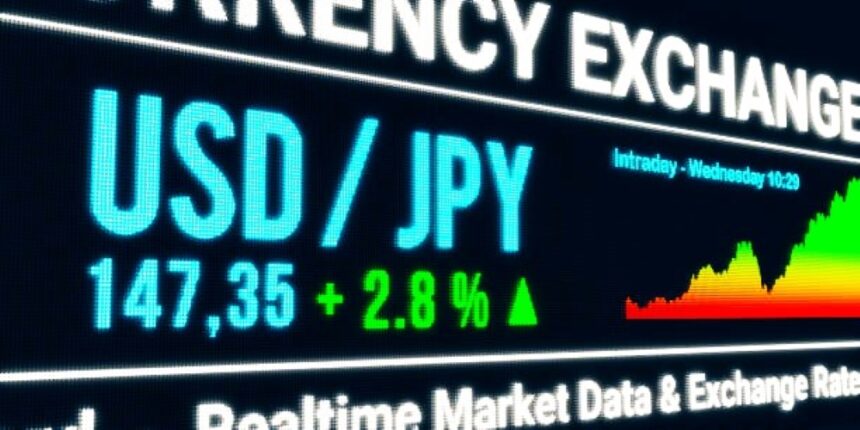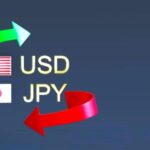Japanese Yen Surges to 7-Month High as USD Crumbles: Safe-Haven Flows and BoJ-Fed Divergence Drive Momentum.
The Japanese Yen (JPY) opened the week with strong bullish momentum, rallying to its highest level since September 2024 against the US Dollar (USD) during early Asian trade. The move below the 141.00 level in the USDJPY pair underscores a growing narrative driven by safe-haven demand, optimism over US-Japan trade talks, and widening policy divergence between the Bank of Japan (BoJ) and the US Federal Reserve (Fed). As risk sentiment weakens globally, investors are increasingly favoring the Yen, a traditional safe-haven currency.
Risk Aversion and Trade Tensions Fuel Safe-Haven Demand for the Japanese Yen.
At the heart of the Yen’s appreciation lies renewed risk aversion stemming from trade-related tensions. Uncertainty over US President Donald Trump’s unpredictable tariff announcements continues to cast a shadow over global market sentiment. Investors, wary of the ripple effects of protectionist policies, have turned to safer assets like the Japanese Yen.
Adding to this dynamic is growing optimism over a potential breakthrough in US-Japan trade negotiations. On Friday, the new US ambassador to Japan voiced hope for a resolution, and over the weekend, Japan’s Prime Minister Shigeru Ishiba struck a conciliatory tone, stating Japan’s willingness to make the bilateral tariff talks a model for other countries. Ishiba’s comments about seeking fairness in currency talks and showing flexibility on automobile market barriers were well received by market participants and further reinforced confidence in the Yen.
Japanese Inflation Accelerates, BoJ Keeps Tightening Door Open
On the domestic front, the Yen’s strength is further underpinned by rising inflationary pressures and a shifting tone from the BoJ. Data released on Friday showed that Japan’s core Consumer Price Index (CPI) rose to 3.2% year-on-year in March, up from 3.0% in February. Even more notably, the core-core CPI—excluding both fresh food and energy—rose from 2.6% to 2.9%, signaling broadening price pressures across the economy.
These inflation readings provide the BoJ with justification to continue normalizing policy, albeit cautiously. BoJ Governor Kazuo Ueda acknowledged that Japan’s real interest rates remain deeply negative and hinted that further rate hikes could be on the table if inflation trends persist. His stance was echoed by BoJ board member Junko Nagakawa, further anchoring expectations of a gradually hawkish trajectory.
Yet, Ueda also noted the need for flexibility. If US tariffs were to impact Japanese exports and threaten growth, the BoJ could consider a temporary pause in rate hikes. Reports also suggest the central bank is preparing to lower its GDP forecasts, highlighting the fragility of the post-pandemic recovery.
This nuanced stance creates a complex policy backdrop: while growth risks linger, inflation and the normalization imperative are increasingly difficult to ignore. This has fueled market speculation that the BoJ may move again in the coming months—an outlook that supports continued Japanese Yen strength.
USD Under Pressure as Fed Rate Cut Bets Grow
The Yen’s rally is also a function of broad-based US Dollar weakness. Despite a relatively hawkish tone from Fed Chair Jerome Powell last week, markets appear unconvinced that further tightening is on the table. Traders are increasingly pricing in a June rate cut by the Fed, with softening labor market indicators and slowing inflation providing the rationale.
Moreover, the US bond market has seen heavy selling in recent days, sending yields lower and signaling growing doubts about the strength of the US economy. The 10-year Treasury yield dipped below 4.15% for the first time since January, reinforcing concerns about a potential slowdown.
This sentiment exacerbated by Trump’s aggressive trade posture, which introduced a fresh layer of uncertainty. With the USDJPY pair plunging to its lowest level since September 2024, below the 141.00 threshold, it is clear that traders are increasingly betting on a weaker greenback, especially against currencies like the Yen that backed by rising domestic inflation and tighter monetary policy.
Technical Analysis: Japanese yen Turns Bearish, But RSI Warns of Overstretch
From a technical standpoint, USDJPY has broken key support levels, suggesting that the path of least resistance remains to the downside. The pair sliced through the 100-day moving average near 142.00 and is now testing the 140.80–141.00 zone, which had previously served as a strong demand area.
The next major support lies around 139.50, followed by the September 2024 low near 137.80. A daily close below these levels would open the door to a deeper correction, possibly toward the 135.00 psychological mark.
However, traders should be cautious about chasing the pair lower at current levels. The Relative Strength Index (RSI) on the daily chart has dipped into oversold territory, hinting at the potential for a near-term bounce or consolidation. Any recovery, however, is likely to be capped near the 142.00–142.50 resistance band, where sellers may re-emerge.
Fundamental Outlook: Diverging Central Bank Policies Point to Further Japanese yen Gains
Looking ahead, the divergence in monetary policy between the BoJ and the Fed remains a major theme driving USD/JPY price action. While the Fed appears to be nearing the end of its tightening cycle—or possibly preparing to pivot—the BoJ is slowly stepping away from its ultra-loose stance.
If inflation continues to surprise to the upside in Japan and the US economy shows further signs of cooling, the USDJPY pair could remain under sustained downward pressure. Moreover, geopolitical risks—such as trade tensions, potential sanctions, or election-related uncertainty—will likely continue to fuel safe-haven demand for the Yen.
Conclusion: Perfect Storm Brewing for Sustained Yen Strength
The Japanese Yen’s rise to a 7-month high is no accident. It reflects a confluence of global and domestic forces: deteriorating confidence in the US economy, Trump’s aggressive trade maneuvering, Japan’s improving inflation outlook, and a slowly tightening BoJ.
As long as these dynamics persist—and especially if the Fed begins cutting rates while the BoJ holds steady—the stage set for further appreciation in the Yen. Traders should remain alert to both technical corrections and fundamental shifts, but the broader trend seems increasingly clear: the Yen is back in favor, and the USDJPY pair may have more room to fall.
Why is the Japanese Yen strengthening against the US Dollar?
What impact do US-Japan trade talks have on the Yen?
What role does inflation play in the BoJ’s policy outlook?
Is the Fed likely to cut interest rates soon?








